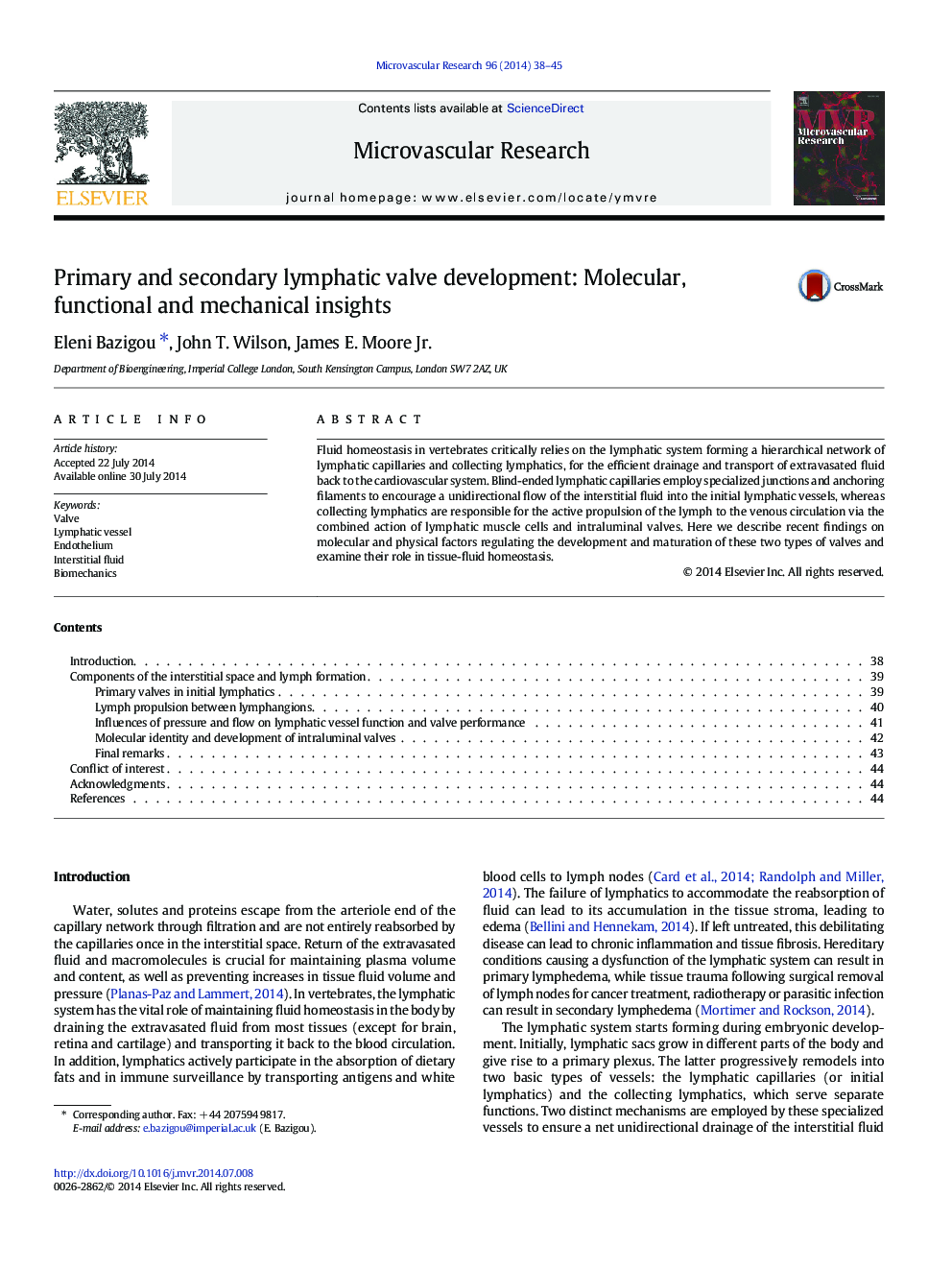| کد مقاله | کد نشریه | سال انتشار | مقاله انگلیسی | نسخه تمام متن |
|---|---|---|---|---|
| 1994759 | 1541288 | 2014 | 8 صفحه PDF | دانلود رایگان |
• Two types of valves in the lymphatic system ensure fluid homeostasis.
• Initial lymphatics facilitate interstitial-to-lymph flow through junctional gaps.
• Bicuspid intraluminal valves ensure unidirectional transport of lymph.
• Intraluminal valve development is flow-induced.
• Lymphatic valve endothelial cells develop a distinct identity.
Fluid homeostasis in vertebrates critically relies on the lymphatic system forming a hierarchical network of lymphatic capillaries and collecting lymphatics, for the efficient drainage and transport of extravasated fluid back to the cardiovascular system. Blind-ended lymphatic capillaries employ specialized junctions and anchoring filaments to encourage a unidirectional flow of the interstitial fluid into the initial lymphatic vessels, whereas collecting lymphatics are responsible for the active propulsion of the lymph to the venous circulation via the combined action of lymphatic muscle cells and intraluminal valves. Here we describe recent findings on molecular and physical factors regulating the development and maturation of these two types of valves and examine their role in tissue-fluid homeostasis.
Journal: Microvascular Research - Volume 96, November 2014, Pages 38–45
